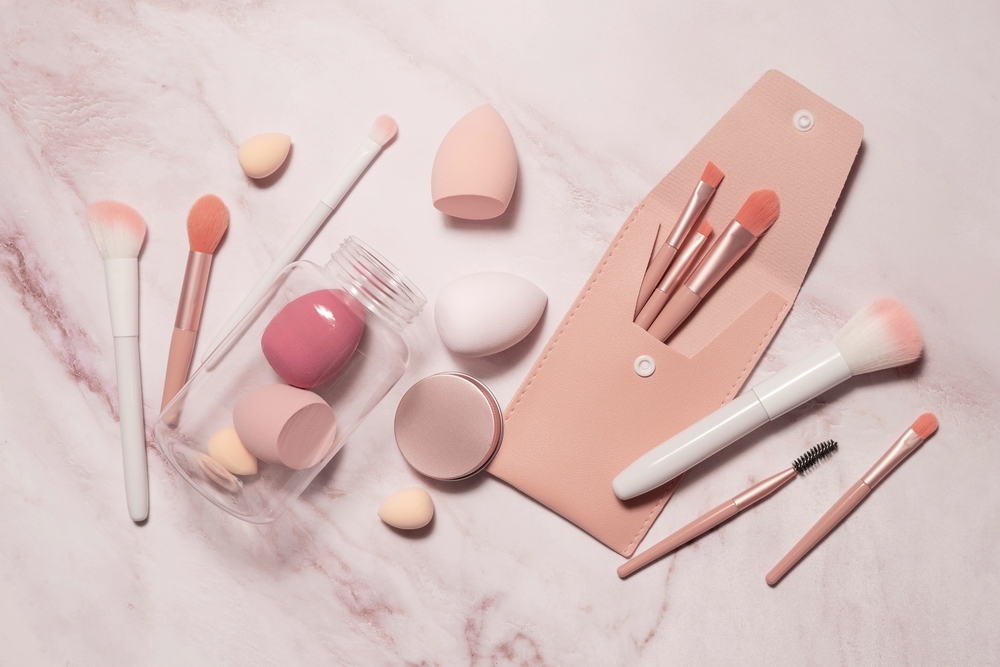
For many people, makeup is an essential part of their daily routine. However, if you suffer from dry eye syndrome, certain cosmetics can worsen symptoms, causing irritation, redness, and discomfort. Fortunately, by selecting eye-friendly products and following hygienic practices, you can maintain eye health while still enjoying makeup. Here’s what you need to know:
How Makeup Affects Dry Eye
Dry eye disease occurs when the eyes don’t produce enough tears or when the tear film is unstable, leading to symptoms like burning, stinging, and excessive watering. Some makeup products can contribute to dry eye in the following ways:
Blocking Meibomian Glands: The meibomian glands along the eyelid margin produce oils that prevent tear evaporation. Heavy eyeliners, especially those applied along the waterline, can clog these glands and worsen dry eye.
Chemical Irritants: Many cosmetics contain preservatives, fragrances, and other chemicals that can irritate the eyes and disrupt the tear film.
Particulate Fallout: Powdery eyeshadows, mascara flakes, and loose pigments can enter the eye, leading to inflammation and discomfort.
Oil-Based Formulas: Some makeup products contain oils that can migrate into the tear film, destabilizing it and exacerbating dryness.
Choosing Eye-Friendly Makeup
When selecting cosmetics, look for products that minimize irritation and promote eye comfort. Here are some key considerations:
1. Opt for Hypoallergenic and Ophthalmologist-Tested Products
Choose hypoallergenic and fragrance-free formulas to reduce the risk of irritation.
Look for products labeled ophthalmologist-tested, which means they have been evaluated for eye safety.
Avoid products with parabens, sulfates, and harsh preservatives that may trigger inflammation.
2. Use Cream or Liquid Eyeshadows
Powder eyeshadows tend to have fallout that can enter the eye and worsen dryness.
Cream and liquid formulations adhere better to the eyelid, reducing the risk of particulate irritation.
If using powder, lightly dampen your brush before application to minimize fallout.
3. Be Cautious with Eyeliner Placement
Avoid applying eyeliner on the inner rim (waterline) of the eye, as it can block meibomian glands and disrupt tear production.
Opt for soft, smudge-proof pencils or gel liners rather than dry, waxy formulas that can flake into the eyes.
Consider tightlining (applying liner just under the upper lash line) instead of lining directly on the lower lid margin.
4. Choose the Right Mascara
Avoid fiber mascaras and waterproof formulas, which can be difficult to remove and may require harsh rubbing.
Use tubing mascaras that create a film around lashes and remove easily with warm water.
Ensure your mascara is replaced every three months to prevent bacterial contamination.
5. Be Mindful of Makeup Removers
Opt for oil-free, gentle makeup removers that do not leave residue in the tear film.
Micellar water and preservative-free makeup removers are good options for sensitive eyes.
Use soft cotton pads or cleansing cloths rather than rough wipes that can cause irritation.
Best Practices for Applying Makeup with Dry Eye
In addition to selecting the right products, following proper makeup hygiene can help protect your eyes:
Wash your hands before applying or removing makeup to avoid transferring bacteria.
Clean brushes and applicators regularly to prevent the buildup of bacteria and allergens.
Apply makeup outside the lash line, avoiding the inner corners and waterline.
Remove makeup thoroughly every night to prevent product buildup that could contribute to inflammation.
Use preservative-free artificial tears before and after makeup application to keep the eyes hydrated.
When to Avoid Makeup Altogether
There are certain situations where it’s best to skip eye makeup:
If you’re experiencing severe dry eye symptoms, irritation, or an eye infection.
After eye surgery or procedures, including LASIK or IPL therapy for dry eye.
If you develop allergic reactions or sensitivity to a particular product.
Conclusion
Having dry eye doesn’t mean you have to give up makeup entirely. By choosing eye-friendly products, following proper application techniques, and maintaining good hygiene, you can enjoy makeup without worsening dry eye symptoms. If you are experiencing discomfort, contact us here at Express Vision for an exam!








